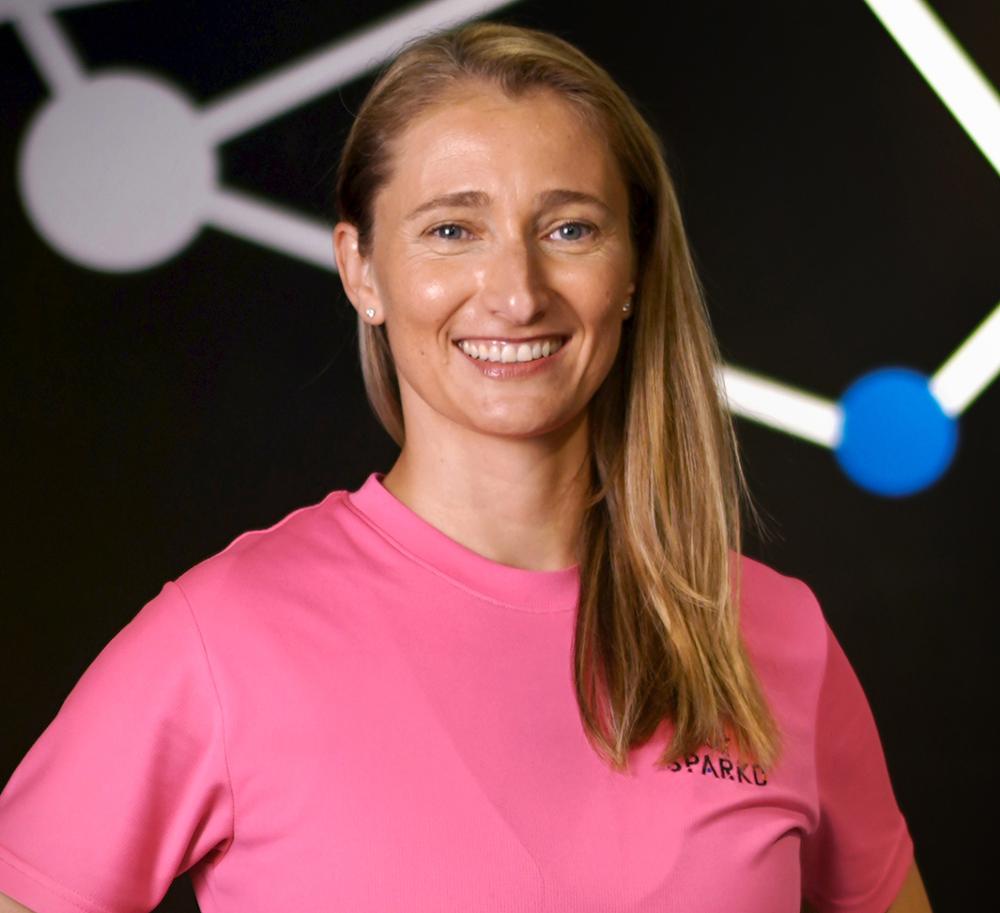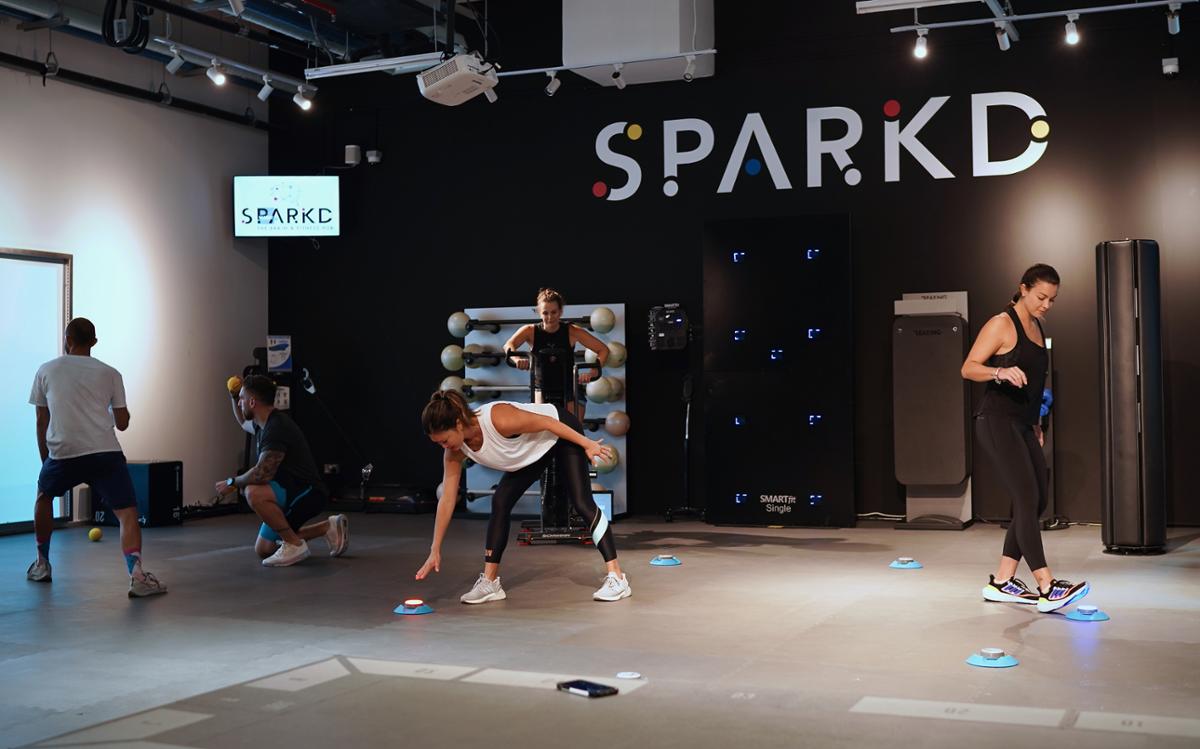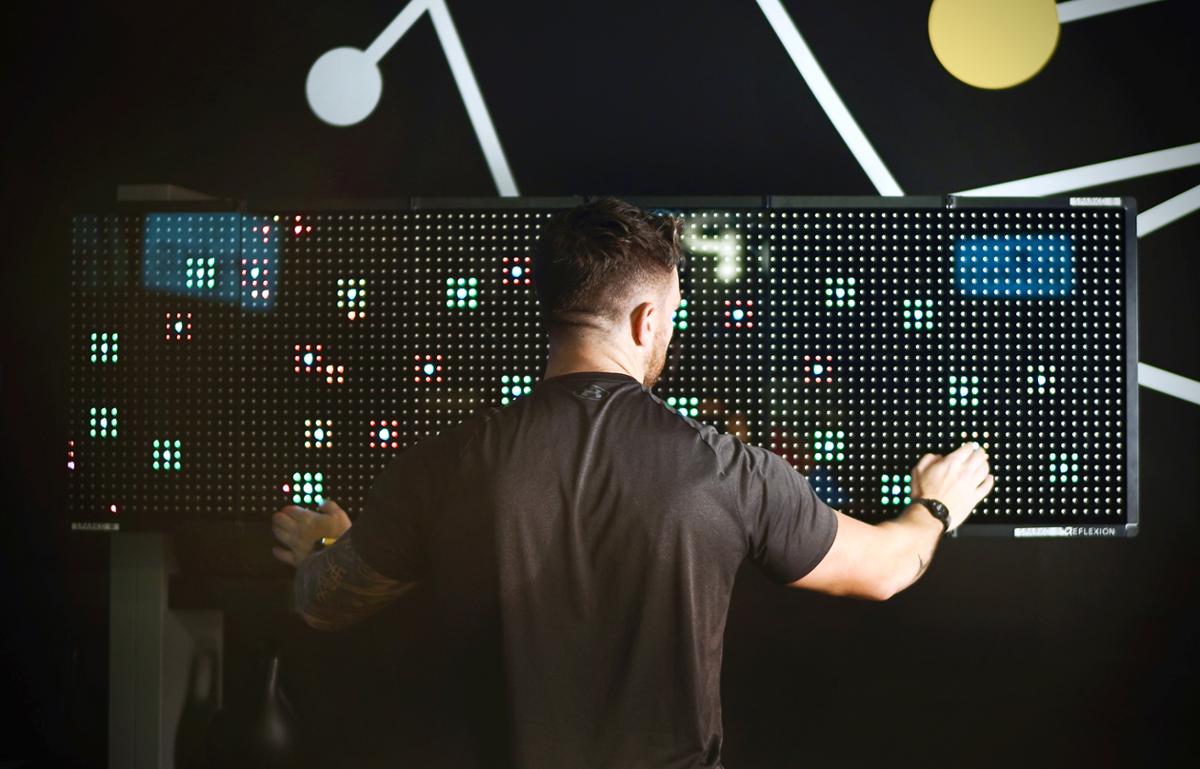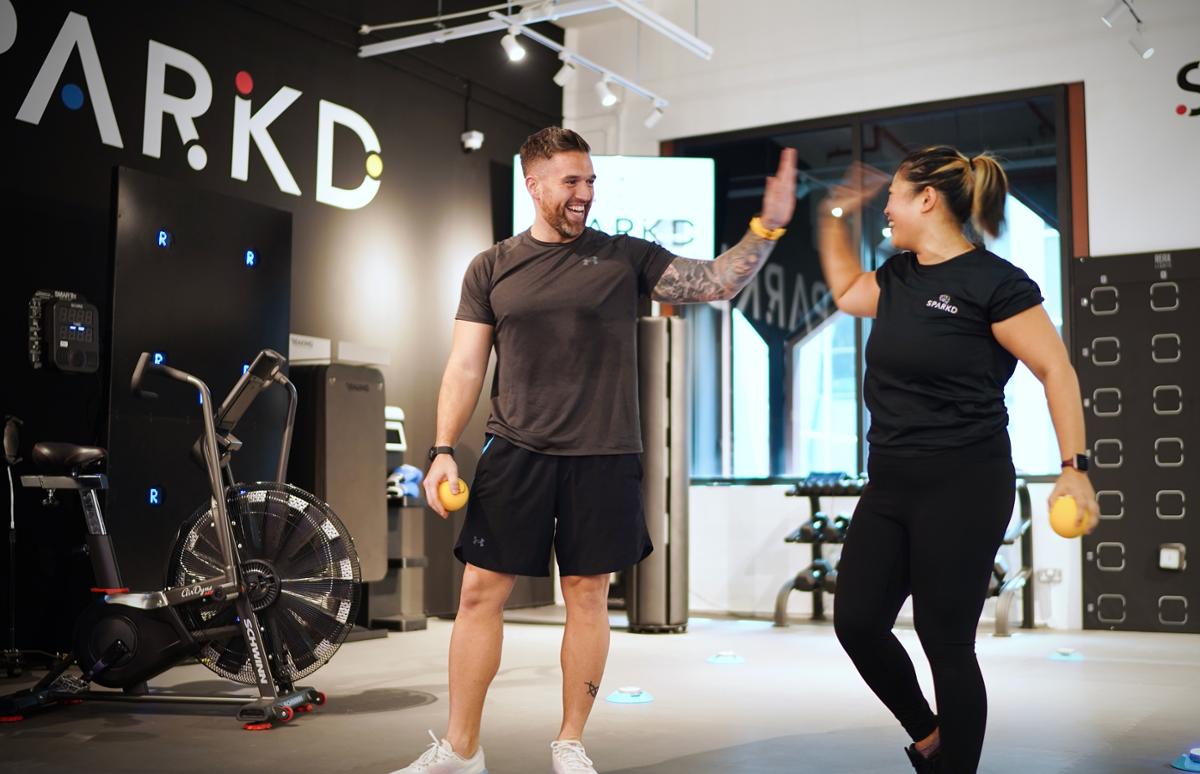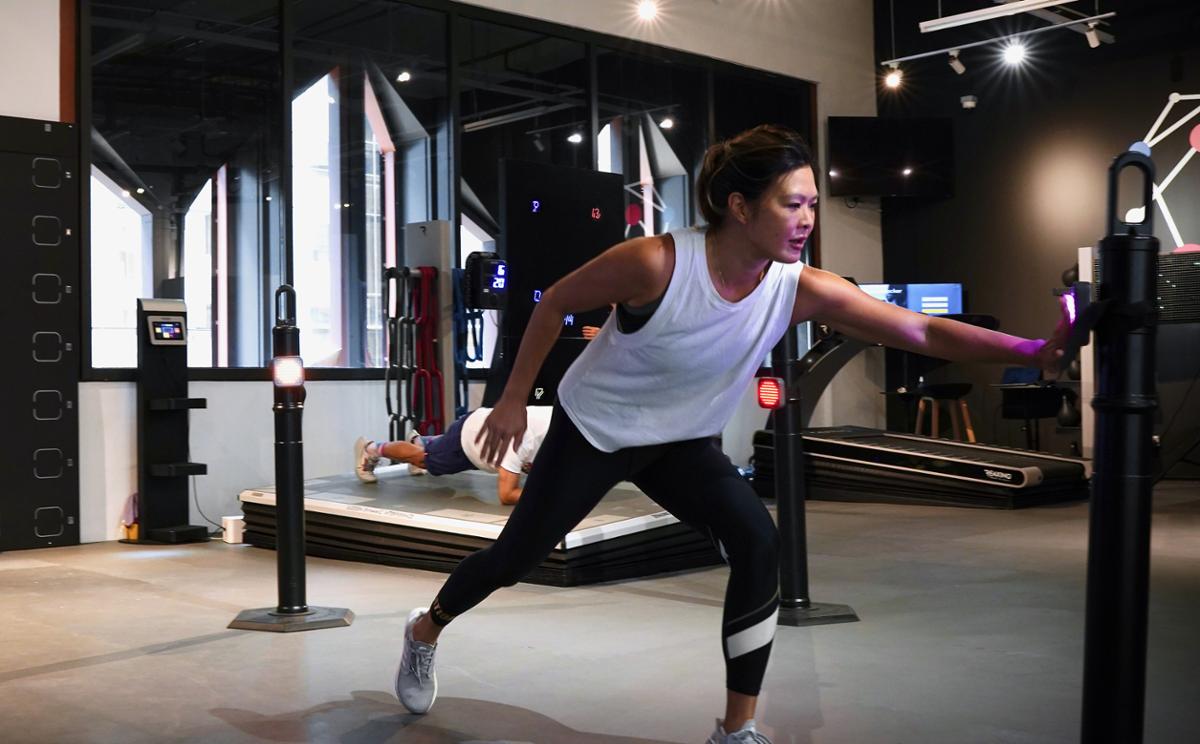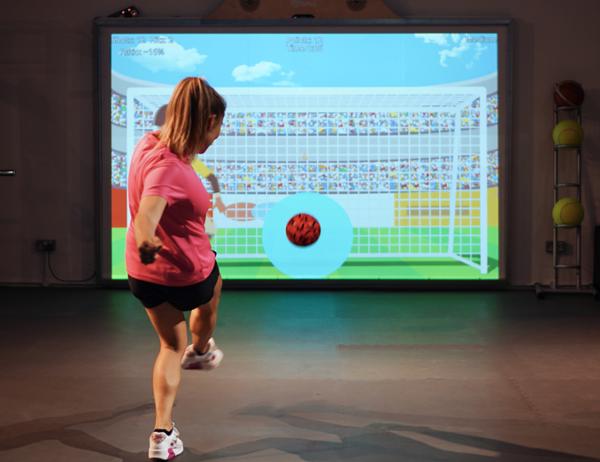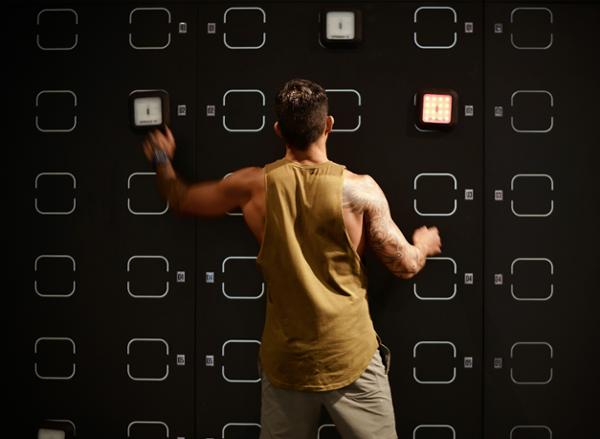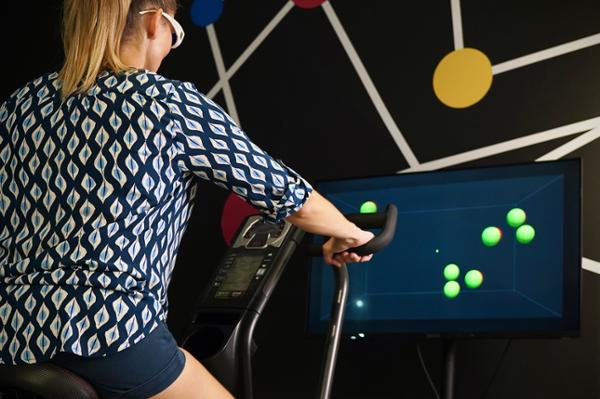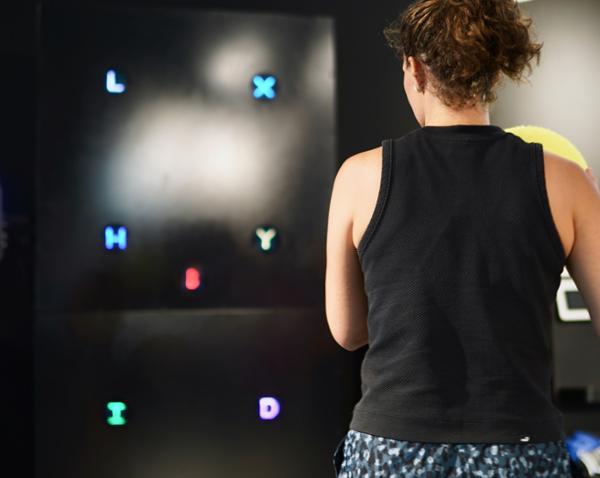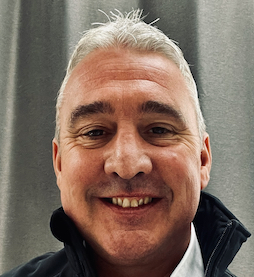Tell us about Sparkd Fitness
Sparkd is a gym delivering brain-body fitness training solutions that work on both physical and cognitive abilities.
The aim is to improve longevity and brain-body performance so people are fit for life and fit for success.
We launched in Singapore and are planning to expand globally – we’re currently looking for funding to enable us to scale.
What is brain health training?
Brain-body fitness training is a multi-component training modality that includes cardiovascular and strength training, coordination and motor skill training, as well as cognitive motor training or dual-task training.
Cognitive motor training and dual-task training require people to simultaneously perform a physical and a cognitive task. For example doing squats while doing maths or memory games on a technology screen.
Recent studies show that dual-tasking – literally doing two things at the same time (which is different from switching your attention from one stimuli to another) increases neuroplasticity, which in turn yields brain health benefits in our everyday life.
This type of training is also fun, gamified and extremely engaging, as participants have to pay attention to the task they’re undertaking, as opposed to getting bored on a treadmill or elliptical machine.
What’s your background?
I’ve been in the health and fitness industry for 20 years. After graduating in contemporary dance, I became a PT and worked for Matt Roberts Personal Training for almost a decade, eventually managing a couple of his centres.
A move to Singapore followed, where I completed an MBA and continued my club management career, while developing the concept for Sparkd.
During this time I became fascinated by neuroscience and the impact movement, exercise and sport have on both our brains and performance and undertook various certifications in neuroscience and coaching.
What inspired its creation?
When I first started conceptualising Sparkd I had a vision of the gym of the future, one that would fulfil people’s needs as we age. I was envisioning a gym for my mum and dad – and myself in the future.
I was particularly motivated to develop this concept as we lost my grandfather to Alzheimer’s and the idea of losing my brain when I’m older scares me a lot.
People’s physical and mental needs change a lot after a certain age and they become more aware of their health and not just their looks.
Fitness becomes more than just pumping the guns and having a six pack. They start realising there’s more to their wellbeing than that.
What journey did you go on to bring it to fruition?
I researched the market for about 18 months, looking at what people were doing across the globe – especially in the US – and came across a few concepts that were sort of going in the direction we were envisioning, but not exactly.
This type of training at the time was only available for elite athletes and people with neurological conditions, but I wanted to make it available to the general population. I was also looking at it from a prevention perspective.
So my mission with Sparkd is to democratise this type of training and create awareness of brain-body health and how it’s never too late to start exercising and therefore improving our brains and bodies.
Did the concept change between theory and implementation?
While I tried to stay as close as possible to what I’d envisioned, I had to adapt along the way.
Launching a new concept is very challenging, as people don’t understand your vision at the beginning.
We’ve spent a lot of time educating our audience on the benefits of doing this type of training. The messaging and the evolution of it has been very interesting. As much as we want to stick to the science, we also have to be approachable and explain the training in lay terms.
We also listen to clients’ feedback while we pursue our vision and mission.
We’re working to improve the technology, our own software and our customer journey constantly to make everything more smooth for users. Things evolve continuously.
What does it take to become a brain health trainer?
The trainers we select need to be cognitively flexible and to be open to upskilling themselves and getting out of their comfort zone, as they need to alter what they’ve been used to doing – sometimes for years.
Once we hire new trainers, they join our online academy and this delivers a variety of training courses from the Brain Health Trainer course in relation to the technologies we use at Sparkd.
Is recruitment straightforward?
Typically trainers hear about us, get attracted by the concept and that’s how conversations start. We then see if they’re a fit for the business.
Recruitment can be challenging, but so far we’ve been fortunate to find people with very different backgrounds. Some have 20 years’ experience, some have PhDs and others come from the corporate world. They range in age too, but what unites us is the training and our mission.
What’s the customer journey?
We offer group classes, personal training sessions and also team building sessions. We also have a booking app.
People attending group classes tend to mix and match according to the classes they want to attend, choosing across a variety of classes targeting cardio, strength and HIIT, combined with the different domains of cognition, such as memory, processing speed, executive function and visuospatial skills.
Groups that come for team building are split into teams and compete against each other on fun, challenging stations – once again targeting both physical and cognitive domains. The teams score points across stations and there’s an overall winning team.
The sessions are very inclusive and have enough variety to cater for participants with different skills – some people are better at memory, some at maths, some at spelling, for example and the same applies to the physical aspect.
The journey for PT customers is more personalised. Each person starts with validated physical and cognitive tests which provide a full report on their cognition and physical capabilities.
These tests create the baseline from which the programme is devised, according to the client’s needs and goals.
The programme consists of two to three sessions a week, during which data is recorded and then every two to three months clients get re-tested, so we can track progress and change their programme accordingly to maintain progression.
Tell us about your customers
Team building events attract a wide variety of clients, with people aged 25 to 60+. Prices for groups of 10 start at S$1,000 (£600, US$730) and upwards, according to the number of people in the sessions. These last for around 90 minutes.
Group classes in Singapore are typically attended by a wide range of people aged 25 to 60+. Prices are approximately S$25-35 (£15-21, US$18-25), depending on the package. Classes are 45 minutes long. PT packages are predominantly attended by people aged 45 and above, or those with specific health conditions.
These groups of people tend to have more specific goals and are predominantly looking at performance and longevity – they want to perform at a high level for as long as possible, whether at work, in their amateur sports, or in life generally.
Though we don’t advertise specifically around neurological conditions, we still attract a group of people that have conditions such as Parkinson’s, mild cognitive impairments and early stage dementia or who are post-stroke or post-cancer. They love training at Sparkd as opposed to a hospital setting, as they feel encouraged and able to accomplish fun tasks and see the improvements in daily living.
Personal training packages start from S$120 (£72, US$88) per session and range up to S$220 £132, US$161) per session.
What equipment is used?
Our technology comes from a variety of suppliers in the USA, Canada, Uruguay, Italy and Germany.
Some of the companies we work with are Reaxing, Smartfit, Reflexion and Neurotracker.
The key to what we do is the blending of physical exercises with the different technologies to create sessions that integrate them in a seamless way.
We’re always scouting and researching new products as they enter the market to remain at the top of our game and evolve as the industry evolves.
How does the tech drive the experience?
Sessions are pre-programmed through our technology to make the experience seamless and each station takes people through a different drill.
Personal training clients can also see their data and how they’re progressing. This isn’t yet an option for group class participants, but it’s something we’re working on.
Clients love seeing their scores and how they’re performing and as the company expands, we’ll evolve and add to this.
Is there an on-demand element?
We’re developing an on-demand, anytime solution which will be very important when it comes to scaling the business. Clients can currently do the online cognitive test at home, as well as using the Neurotracker.
This means they can train with the Neurotracker anywhere – it only takes around six minutes a day and can be done anytime. A minimum of three sessions a week is recommended.
What future do you see for brain body fitness?
There’s huge potential in a variety of populations. Sparkd’s training applications can be enjoyed by children, adults and seniors in health clubs, schools, colleges and universities. In addition, they can complete existing offerings for hotels and corporates.
We also see applications in senior living facilities, as well as huge potential in smart cities, where these techniques could be built into everyday life.
We’re getting more interest from the medical sector where they’re interested in offering what we do to patients in hospitals as an extension of their ecosystem, as well as to complement what they do for continuing care. I strongly believe that what we do is uniting fitness, wellness and the medical space and I am very excited about the opportunities.
What’s your roll-out plan?
We started in Singapore and are currently expanding into Thailand and exploring other areas in South East Asia. We’re also getting interest from Europe and are exploring ways to enter the market there.
The US is the biggest potential market and in time we’d love to be there too.
Who is financing the business?
We have silent investors and are currently looking for our next round of investment to scale our business.
What’s your ultimate goal?
Our goal is to empower people to live a fulfilled life in both body and brain, and enable everyone to be able to train like an elite athlete.
We believe that everyone can improve their brain-body performance.








